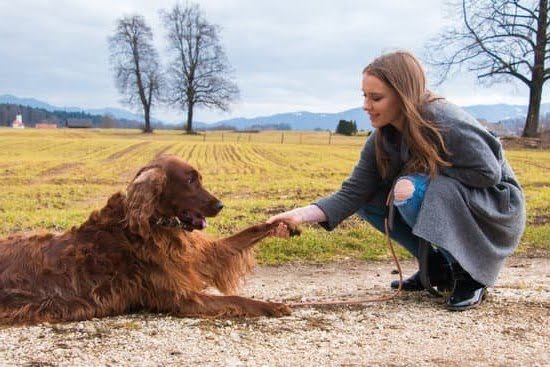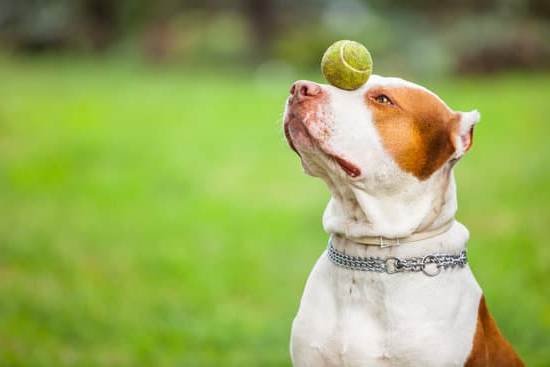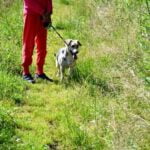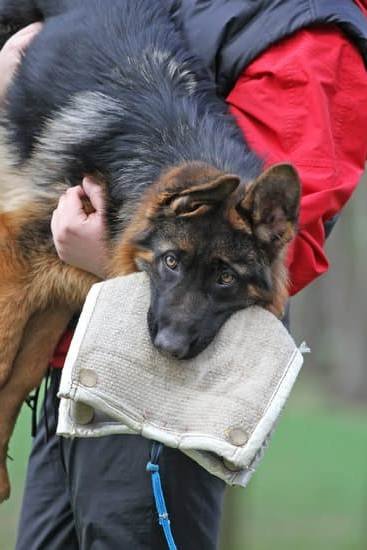Introduction
Food possessive dogs can be a challenge to train due to their aggression around food. They may become overly possessive of food objects, snap and even bite when people or other animals come near. This behavior is an instinctive territorial defense that should never be tolerated, as it could result in serious injury. In order to effectively train a food-aggressive dog, it is important to understand their natural behaviors and the underlying cause of their possessiveness.
Understanding why your dog is displaying food possession can help guide your training technique and provide you with effective solutions. Dogs become possessive of their food for several reasons; fear of resource scarcity, an unresolved sense of competition with other household members or animals, or simply being protective by nature. Understanding the root cause will allow you to adjust the environment and create positive training experiences for your dog.
Once you’ve identified the source behind your dog’s food aggression, there are some tips you can use to help modify their behavior. Firstly, establish yourself as the Alpha in order to show them who’s in charge and make all decisions surrounding food items. Introducing new foods gradually will also help make them more comfortable around unfamiliar sources. Additionally, making sure no one ever takes away your dog’s food dish while they’re eating will prevent any feelings of insecurity and help create a safe space for mealtime. Setting up regular reward-based training sessions with plenty of positive reinforcement will further solidify the desired behaviors while getting rid of any unwanted ones.
Identification
One of the first steps in training a possessive food-loving dog is to recognize that such behaviour exists. Possessive behaviour can manifest itself in different ways: a dog may display aggression, barking, and body tense if it thinks others are getting close to its food. It could also show signs of anxiety when another animal or person moves too close to it when eating. The best way to identify possessive food-loving behaviour is by watching for these behaviours at mealtimes – both with other animals and people around. Additionally, look for changes in posture, such as tensing up, or rigidly positioning itself between its bowl and anything coming near it. These signs can also be seen while playing with toys or during walk times when encountering other animals.
Causes of Food Possessiveness
Food possessiveness in dogs is a normal behavior but can become dangerous if not handled properly. It is important to understand the causes behind it so you can better train your dog. One of the main causes for food possessiveness in dogs is instinct. Dogs have an instinctive need to protect their food, as they once lived in packs and needed to guard their food from other animals and members of the pack. This natural instinct can become problematic if not properly managed. If food possessiveness isn’t addressed, it will only get worse over time. Another cause of food possessiveness is insecurity. If a dog has had its food taken away or a negative experience involving food, then they may begin to feel insecure and territorial around their meals. A third cause of food possessiveness is simply boredom. If a dog doesn’t get enough activities or mental stimulation during the day, it might start displaying this type of behavior as a way of getting attention or just passing the time.
Establishing Yourself as the Alpha
As the owner of a food possessive dog, it is essential to make sure that you establish yourself as the dominant “alpha” in the relationship. This can be done by providing commands to your canine and then following up with rewards for good behavior. Set boundaries for your furry friend, such as not allowing them to growl at family members during meal times or jump on guests when they come over. These actions will help make him respect you as the leader and will help reinforce positive behaviors in regards to food possessiveness. It is also important that you don’t reward your pup with treats or hand outs if he acts out (for example, if he jumps on visitors when snack time comes around). Doing so can end up reinforcing this misbehavior and will only make things worse in the long run.
Countering Your Dog’s Fear of Losing Food
Training a food possessive dog involves counteracting their deep-seeded fear of losing their food. This can take some time and patience but is achievable with consistency and commitment. Use positive reinforcement to teach your dog that sharing food is beneficial, not harmful. Start off by giving them treats when they share or allow you to touch the food or bowl while they are eating. If your dog becomes defensive around mealtime, give them their bowl in a location that limits their ability to guard it for example in a corner of the room near a wall where they can’t access it from all sides. Once you have given them their bowl, step away and have the whole family ignore them until they start to eat calmly. This will teach your pet that guarding won’t benefit them as nobody pays attention. Your pup needs to learn that being possessive about their meals will result in being ignored and feeling lonely – something no dog wants! As your pet improves, reward and praise him during meals so he recognizes good behavior from bad behavior and he can continue creating positive associations with mealtime and sharing in general. A lot of repetition will be required but eventually, with patience, consistent positive reinforcement, and practice you can help your pup defeat his fears of sharing or giving up his cherished mealtime snacks or toys!
Consistency Between Family Members
Training a food possessive dog can be a challenge, as dogs may act aggressively around their food or treats. It’s important to ensure that all family members are on the same page when it comes to implementation of training rules. Everyone should understand their role in training and follow through with implementing any given commands with consistency. For instance, no one in the family should feed the dog without permission, and any requests for the dog to release its food should be done with consistent body language and vocal commands by each family member. Additionally, if previously agreed upon behaviors such as not being allowed near the kitchen table or getting treats from anywhere but the crate aren’t being followed, all involved family members need to remind and reinforce this consistently until proper behaviors are established. Training a food possessive dog requires commitment from everyone involved to ensure there is consistency in both what is expected from the pup and how those expectations are maintained.
Counter-Conditioning Exercises
Counter-conditioning is a type of behavior modification used to change a dog’s response from one habitually exhibited action to another desired action. It can be employed to train a food possessive dog by teaching the animal that good things happen when someone approaches the food dish.
When beginning counter-conditioning training, make sure that your pet is in an area where he feels secure and can focus. Have another person help you by providing desirable rewards such as treats or toys that your pet loves. Ensure that these items are designated as only given from your helper during this exercise and are not usually accessible during regular play periods or meal times.
Begin by having your helper stand several feet away from the food dish while you place their reward near the helping reaching the food dish without approaching it (remaining at least six feet away). If your pet shows no possessiveness toward their food, reward them with a treat and move further away, gradually moving closer until they reach the point of being able to interact positively with the person who offered them the reward close to the bowl without showing any aggression or possessiveness. Increase distance again if your pet begins to act possessively and then repeat this exercise multiple times over several days until your pet willingly allows someone else near their food bowl without exhibiting signs of protectionism.
Training Exercises to Discourage Possessiveness
The most important part of training a food possessive dog is to teach the dog that it does not own the food and develop a positive association between relinquishing the food and something more desirable, like being petted or given another treat.
One way to do this is by starting with a very simple exercise; holding out an open palm with some treats visible in it. If your dog begins snatching at the treats, cover them with your other hand and start counting to three. During this time, give verbal cues such as “No” and “Leave it” firmly but in a non-threatening manner. Once you reach three, say the words “All Done” while pushing your hands away from each other slightly while remaining still. If they try to grab for the treat again, repeat these steps until they eventually give up trying in favor of looking at you or sniffing around somewhere else instead.
An alternative approach for this exercise is by using a toy filled with treats instead of just open palms. When presenting the toy to your pup, keep your hands close to the sides of their face, making sure there’s no possibility of them grabbing onto the toy, then use similar verbal cues as before such as “No” and “Leave it” if they try to do so. When they back away from or ignore the toy completely after a few seconds (maybe even showing signs of relaxation such as licking their lips), reward them with lots of praise! With enough practice, they will learn that relinquishing their hold on objects results in positive outcomes.
For added reinforcement, you can add distractions into playtime sessions by introducing other people into close proximity with your pup and its food or toys, making sure said persons remain calm and confident all throughout these exercises (especially since anxious behavior will only encourage neurotic possessive behavior). This establishes that nothing bad happens when someone else is near them during meal times or when playing fetch – ultimately helping them get comfortable sharing meals or toys without fear or aggression.
Managing Possessive Behavior With Reinforcement
Reinforcement training is one of the most effective ways to manage possessive behavior in dogs. Reinforcement training uses positive reinforcement techniques that reward your dog for desirable behaviors. When done correctly, the goal of this type of training is for the dog to learn that what it has (the food) will not be taken away provided that it behaves properly.
Begin by teaching your dog basic obedience commands such as sit and stay. This will help you to control its movements and reactions when people or other animals approach, as well as serve as a reference point every time you correct its behavior. Be mindful that although your dog’s possessiveness may be directed at food, it could generalize to other objects or people. Therefore, make sure that you also work on commands like leave it and drop it so it understands when it needs to let something go.
During mealtime, practice exercises with distractions or attempt them outside the context of mealtime so your dog gets used to having people around while they are eating without getting possessive. Reward any progress they make towards calming down with treats and praise. Additionally, feed your pup in the presence of other family members or pets; if needed, have them participate in a competitive activity such as a game of tug-of-war near their food bowl so they can learn that having company present does not mean they have to guard their food possessions. Finally, never punish your pup when they are displaying possession behaviors; not only is this ineffective but doing so could cause new issues such as anxiety and aggression.
Conclusion
One of the most rewarding processes when it comes to your dog is training. While training can be a daunting process, this guide on how to train food possessive dogs will help you achieve the best results. To ensure that your pooch thrives, start by establishing a positive and structured relationship with your pet. Provide incentives such as treats and attention whenever he exhibits good behaviour and discipline him with negative consequences when his bad behaviour occurs. Start teaching basic obedience commands such as “sit” and “stay” before introducing more complex tasks or working on specific possessions behaviours. With patience, consistent behaviour, and consistency in both praise and discipline, you can help create an enjoyable environment for everyone involved or have a thoughtful companion.
Ultimately, reaching the perfect end result takes time and patience. When training a food possessive dog remember to stay focused on positive reinforcement while gradually decreasing self-reinforcement over time until the behaviour is no longer necessary. Be consistent in your technique; don’t give up if progress is slow at first because with practice, trust, love and dedication you will attain the goals you set for yourself and your pup!

Welcome to the blog! I am a professional dog trainer and have been working with dogs for many years. In this blog, I will be discussing various topics related to dog training, including tips, tricks, and advice. I hope you find this information helpful and informative. Thanks for reading!





